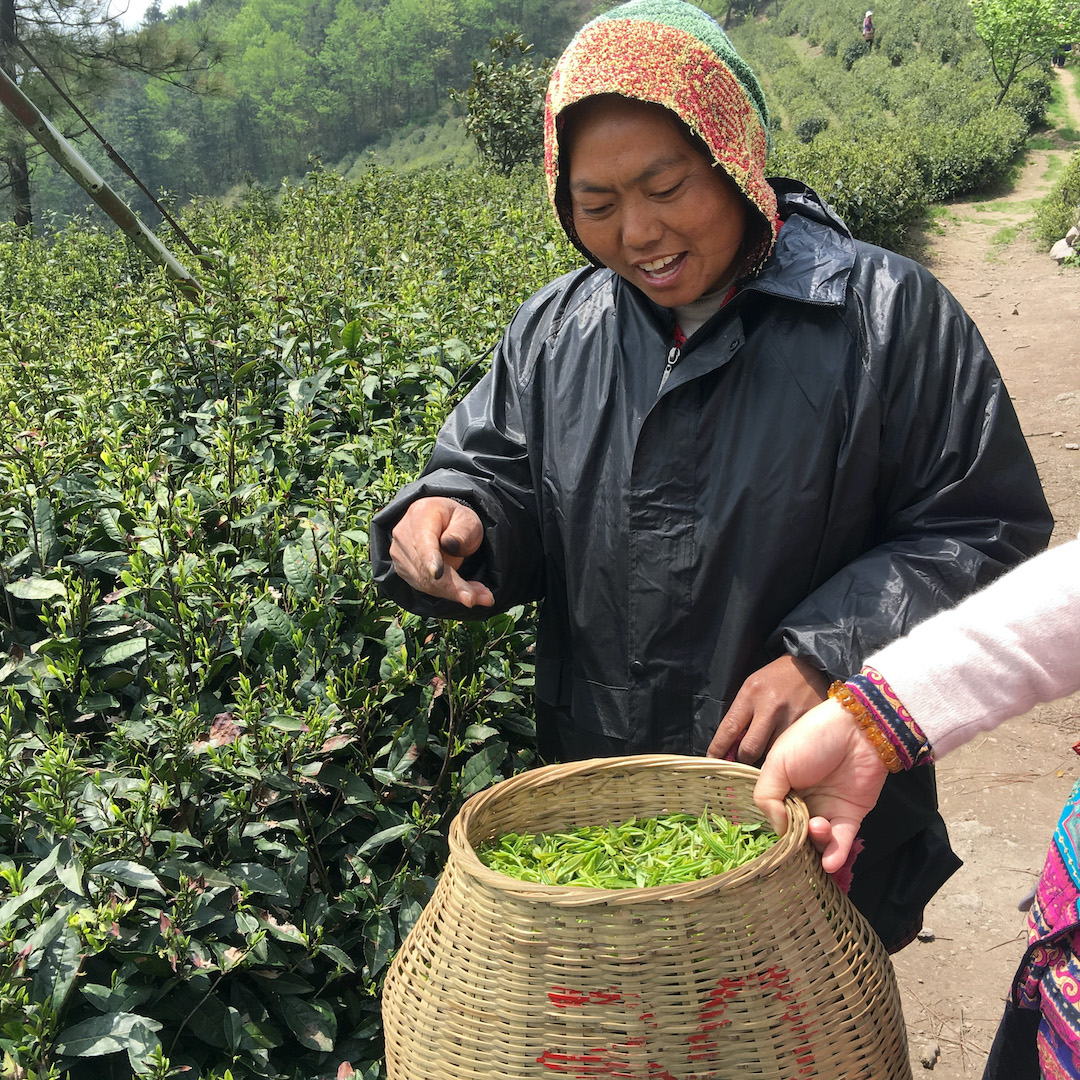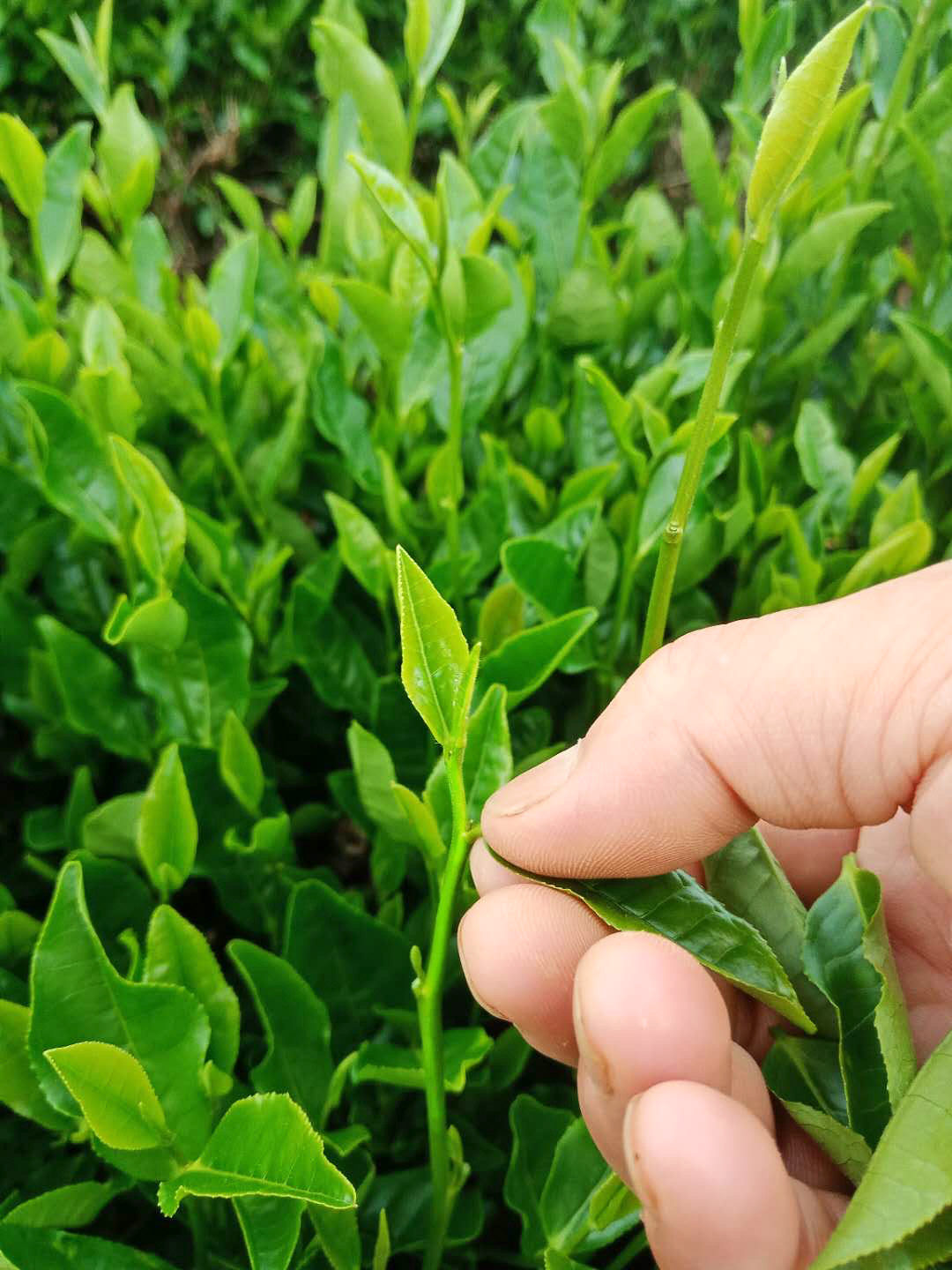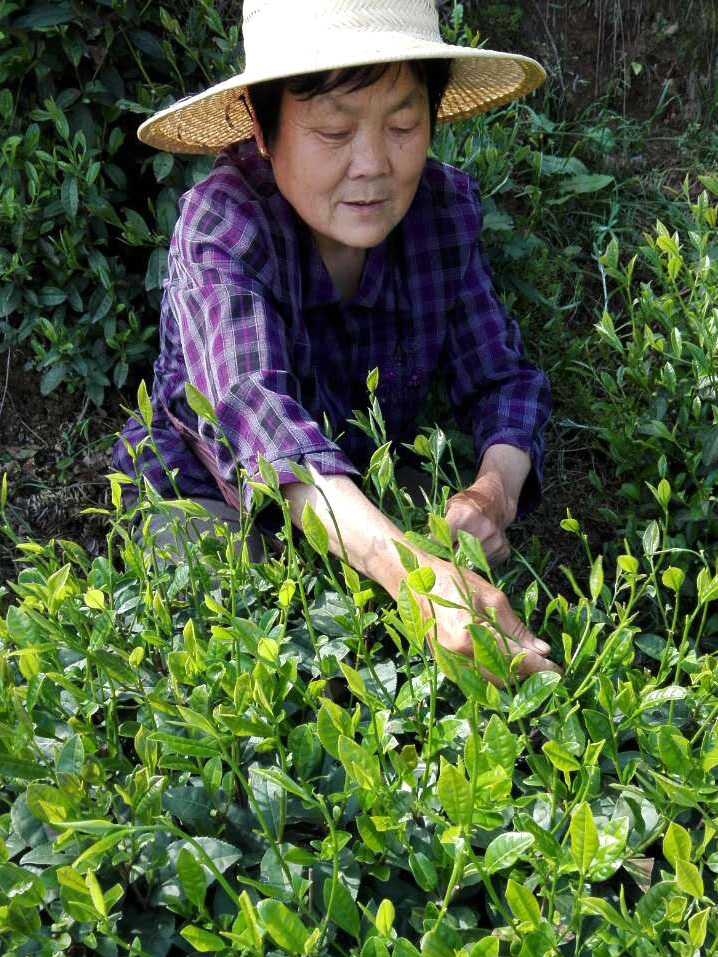Newsletter Archive Sep. 10, 2021

As summer roars to an end, how about some green tea?
This week we’re featuring Tai Ping Houkui and Lu’an Gua Pian, the odd darlings of Anhui. These two teas stand out with their unusual cultivars, complicated plucking, and even-more-complicated processing. If you’ve never tried them before, prepare for a memorable tea session.
We’ve delved into the complicated processing of Tai Ping Houkui and Lu’an Gua Pian before. Before the tea making process even starts, there’s lots to be said about how the fresh leaf gets plucked off of the tea bush and who is out there doing that plucking. All producers of these two teas that we’ve met have relied solely on local pluckers from Anhui Province to capture the fresh spring leaves of Tai Ping Houkui’s extraordinary large leafed and broad-stemmed Shi Da Cha (“persimmon”) cultivar and Lu’an Gua Pian’s singular second-leaf-of-the-spring pluck. Getting a fine pluck, without damaging the leaves, takes significant skill. It makes sense that even outside of Anhui, tea pluckers from this province are highly regarded in the industry for their precision and speed.

Tea pluckers from Anhui are by-and-large women from rural families who leave home life for the early spring season. High-end Zhejiang teas, like Anji Baicha, Mogan Huangya, and Da Fo Longjing are, more often than not, hand-plucked by this female workforce. Their skill accounts for quite a lot, but it’s important to understand that the demand for Anhui tea pluckers is also the result of economic disparity. Compared to neighboring provinces, Anhui is historically resource-impoverished, with its rural households under the most strain. Anhui people are however famously resourceful and well educated — the province is well known for producing prominent officials going back to dynastic times.
As a labor force, Anhui tea pluckers live up to this savvy reputation and are well organized. Farms contract with an organizer, who represents the pluckers to make sure that compensation is delivered as promised. If terms are breached, pluckers will stop their work in unity. A valuable early spring tea harvest only happens in a short window of growth. A tea bush still grows, even if work stops. It’s in tea producers’ best interest to honor their part of a contract and keep their pluckers satisfied, lest a tea garden’s most valuable crop go unharvested.
The skill and care a tea plucker brings to their work is evident in every cup. In few other teas is this as visible as in Anhui’s own Tai Ping Houkui and Lu’an Gua Pian. It’s our privilege to bring these teas to you and do our best to preserve the work that begins with the careful labor of Anhui’s tea pluckers.

